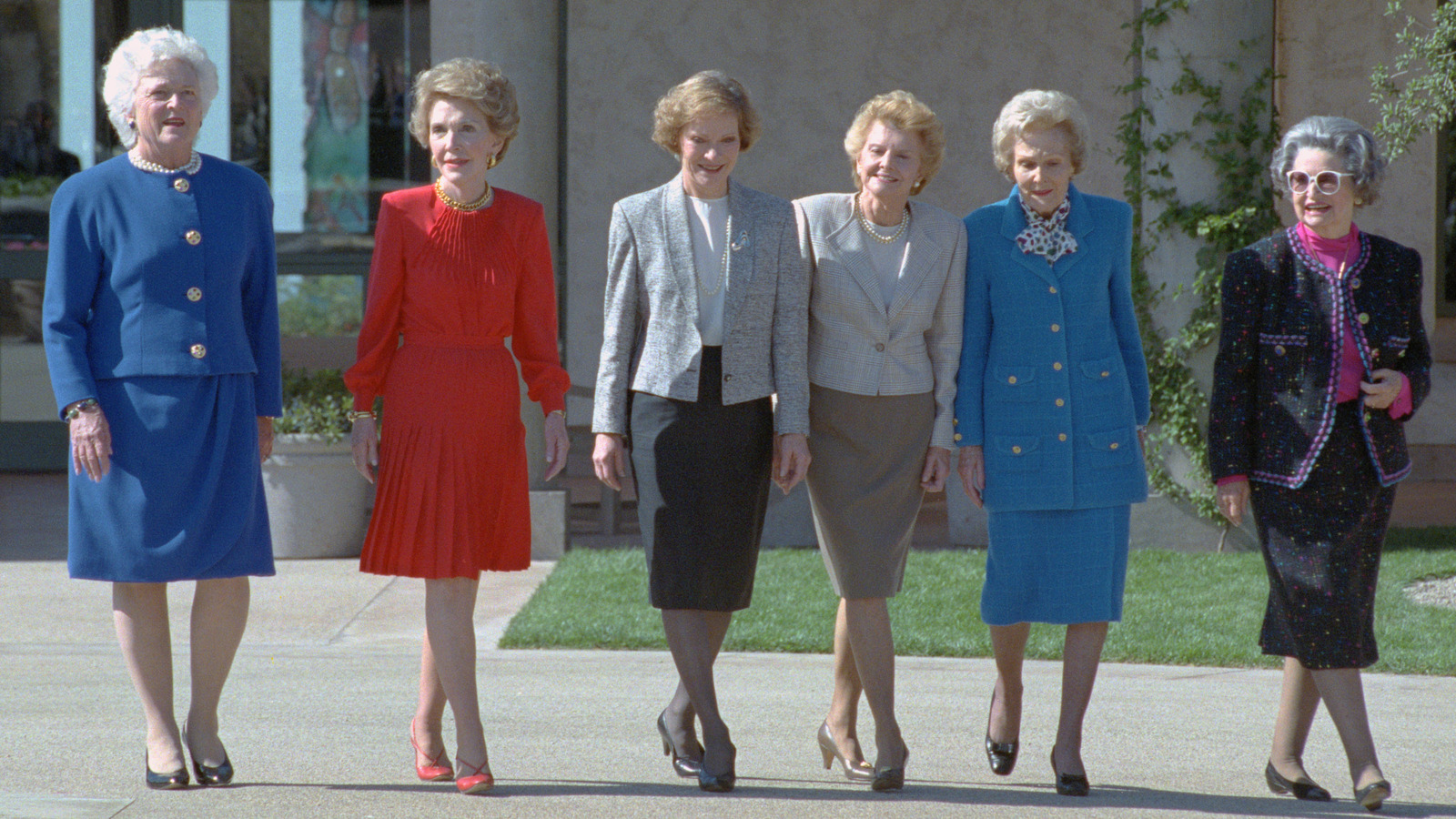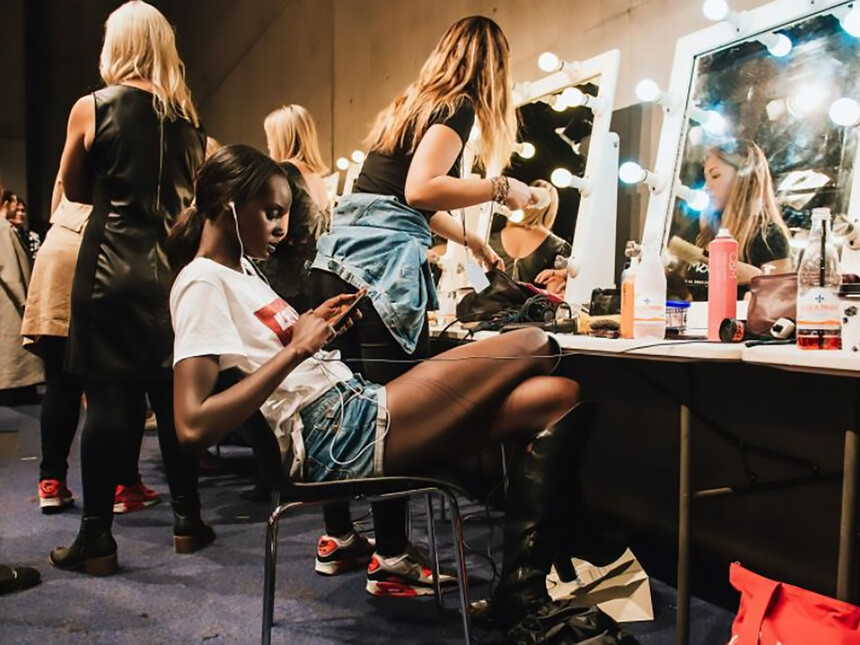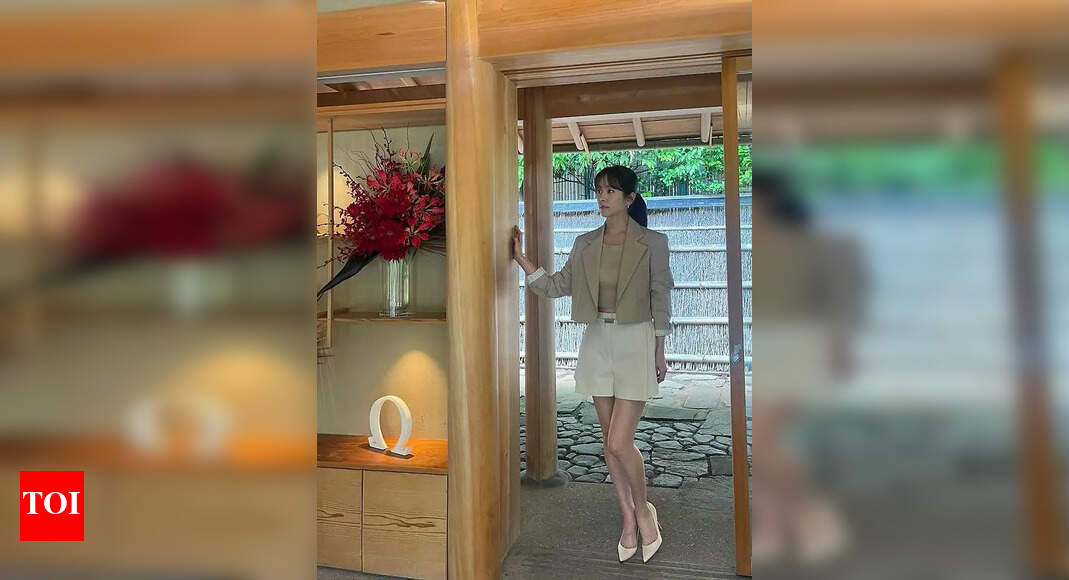American presidents may have the world in their hands, but it’s the first ladies who leave lasting impressions on the fashion world. Living their lives on the international stage, these women have teams dedicated to curating every detail of their looks because, indeed, every detail is under scrutiny. From the designers they work with to the footwear they don, these sartorial elements forever shape the way we perceive a FLOTUS, and if she’s influential enough, they can also send ripples down the runways.
We can’t talk about first-lady fashion without discussing the inimitable Jacqueline Kennedy Onassis. Mention her name to someone three decades after her death, and, even knowing little else about her, they’ll point to those iconic staples that she was synonymous with: the pink Chanel suit and the pillbox hat. Her influence was such that brands still try to emulate these looks today, even after other fashionable first ladies have made their mark. Nancy Reagan’s name also still echoes when we think of glamour at 1600 Pennsylvania Avenue, seeing as she restored Jackie’s elegant standards following an era when fashion took a back seat. And, of course, as the first FLOTUS to popularize sleeveless dresses in a formal capacity, Michelle Obama’s style transformation has left her an icon.
The true measure of a fashion powerhouse is a presence that’s still felt long after the moment has passed, and the following first ladies set trends — both in and out of the White House — that we can still see today. Even if most people aren’t aware that it was Barbara Bush who destigmatized costume jewelry or Nancy who made red happen, these women had everlasting effects on style as we know it.
Michelle Obama set the scene by mixing high and low fashion
Before Michelle Obama, previous first ladies in modern memory were known for leaning toward higher-end designers and styles, with the exception of Rosalynn Carter, who famously brought her own sewing machine to the White House and was known to give away her dresses. Michelle certainly had her extravagant fashion moments, but a huge part of her unique style was mixing high and low, thereby making FLOTUS style more accessible.
Along with her gowns from Tom Ford, Ralph Lauren, and Alexander McQueen, Michelle proudly donned pieces that were unexpected of a first lady before, such as cardigans from J.Crew and dresses from Target and H&M. Other women in similar positions have adopted the high-low approach, and it’s most famously associated with the Princess of Wales, who notably wears both Zara and Jenny Packham. But since Kate Middleton didn’t marry into the royal family until 2011, when Michelle was nearing the end of her first term as first lady, it’s debatable whether this trend was kicked off by Mrs. Obama. Melania Trump, who first served as FLOTUS in 2017 following Michelle’s second term, has also sported more affordable brands from time to time, including J.Crew. Given Melania Trump’s taste for expensive looks, maybe she was trying to follow in Michelle’s footsteps with the odd down-to-earth choice every now and then.
Jackie Kennedy made pillbox hats a thing
More than 40 years before Michelle Obama brought first-lady fashion to the masses, Jacqueline Kennedy Onassis was cultivating her own brand of FLOTUS style, and it was decidedly more exclusive. In hindsight, she’s considered a fashion icon for many things, but one of the most notable trends we can thank her for is the pillbox hat. She was first seen wearing the sophisticated accessory in the 1950s, before her husband John F. Kennedy was elected. Then, she wore a similar style of hat to his inauguration in 1961. Purposely different from what everyone else was wearing, the hat started Jackie’s fashion reign with a bang. Meanwhile, costume designer Marion Boyce told ABC News in 2024 that the real allure of this hat may have been in the color coordination with the rest of her outfit: “Just think of Jackie Kennedy during that time — matching colours, the perfect hat and the perfect-coloured handbag.”
Jackie returned to the pillbox hat for many milestones in her life, often keeping up that monochromatic energy that gave the whole look even more elegance. Even before the inauguration, where she wore a neutral hat that read duck-egg blue on televisions at the time, she opted for a black version for the christening of her son, John Jr., in 1960 and paired brighter yellow and red variations with matching skirt suits the following year.
Hillary Clinton helped to popularize Hillary headbands
Hillary Clinton’s most influential fashion eras can be divided in two: her style as first lady, when her husband Bill Clinton was POTUS from 1993 to 2001, and her style as a presidential candidate, when she ran against Donald Trump in 2016. And if there’s one accessory that summed up her time as first lady, it’s absolutely the so-called “Hillary headband.” Headbands were a big trend in the ’90s, and Hillary might have had something to do with it. While supermodels and A-list movie stars rocked the look, too, Hillary brought a preppy quality to the headband by teaming it with tailored skirt suits. She consistently wore them on the campaign trail beside her husband and also sported them once she was in the White House, typically favoring black, which replaced the inherent femininity of the accessory with something more traditionally stronger (though we’d argue that femininity is powerful).
By the time Hillary had returned to the global stage in the 2010s, she seemed to have left the headband behind. With a shorter ‘do for her own campaign trail, she shifted her focus from accessories to wardrobe, making the pantsuit her own after donning skirts for much of her FLOTUS era.
Dr. Jill Biden was at the fore of sustainable fashion
Michelle Obama is credited as the first FLOTUS to embrace high-low dressing, but Dr. Jill Biden took sustainable fashion to a new level. First coming to the White House in 2021 at the height of a global pandemic, she was under pressure not to follow in the footsteps of Marie Antoinette. So, her style focused on recycling and repetition, the most notable instance being on a 2021 trip to Japan to celebrate the Tokyo Olympics, when she wore only one new ‘fit, pulling everything else from what she’d already been seen in.
The Japan trip wasn’t a one-time occurrence, either. Jill continuously repeated outfits, sometimes leaving only days or weeks between them. And she wasn’t trying to hide her recycling tendencies: The looks that she re-wore had previously been seen by the international press at closely watched events like state visits and television appearances. This statement-making move perhaps helped push the shift toward sustainable fashion that’s become more prevalent in the 2020s.
The former FLOTUS was still able to cultivate her own sense of quiet style, favoring pantsuits, midi dresses, and florals, but she was also doing her part to make the concept of sophistication more accessible. Michelle demonstrated that you can still be elegant in fast fashion, while Jill showed us that first ladies still outfit repeat. Even Kate Middleton has repeated several of her outfits like a sustainable queen, so we’re happy to see this movement become so widespread.
Barbara Bush is synonymous with her faux pearls
The first lady who most closely fit into society’s preconceived ideas of what a grandma looks like, Barbara Bush wasn’t known for being a trendsetter in the sense that Kim Kardashian is. But she did still leave a mark on how we dress, particularly when it comes to jewelry. Her most famous accessory was the pearl necklace: She wore a three-strand version to her husband’s inauguration and continued wearing single- and double-strand versions throughout her term. This made the classic jewel popular again (even today, there are many modern ways to pull trendy pearls into your wardrobe), which was so closely associated with Barbara that the hashtag #PearlsforBarbara was trending when she died in 2018. But the extent of her influence on jewelry fashion is two-fold.
Barbara wasn’t the first FLOTUS to don pearls — they were famously part of Jackie Kennedy’s glamorous aesthetic — but she was honest about the fact that her pearls were fake. Though the press ripped into her for wearing costume jewelry as a first lady, the confidence with which she wore faux pearls helped to destigmatize jewelry that’s not the real deal. “I wouldn’t want [the pearls] if they were real,” she told Fresh Air in 1994 (via NPR). “They’re sort of fun, and, besides that, they’re big enough to cover my wrinkles.” Jackie wore faux pearls, too, but admitting to it and embracing it is very much part of Barbara’s lasting legacy.
Michelle Obama made wearing flats acceptable for the first lady
Sore feet are part of the deal of being first lady, but opting for flat shoes is more common now than it’s ever been. We credit Michelle Obama with making flats not only acceptable but also stylish, at least in the context of White House fashion. Don’t get us wrong: Michelle has plenty of killer heels in her shoe repertoire, but she was the first FLOTUS to make flats a strategic part of the outfit rather than just something one ashamedly threw on when their feet couldn’t take it anymore. From mesh flats worn on family vacations to sandals worn to White House picnics and on international visits, Michelle embraced the lack of heel like no other.
Since Michelle’s two terms as first lady, we’ve seen other similar figures following suit. Laura Bush famously wore flats to the 2021 inauguration, while Hillary Clinton favored the kitten heel during her presidential run rather than traditional pumps, which she tended to wear on duty as first lady. Not all first ladies have taken after Michelle, however. The current first lady seems to be particularly attached to her stilettos — as she has every right to be — to the point of them being inappropriate shoes that have landed Melania Trump in hot water. She does sometimes go for high-end ballet flats, though, so Michelle may have left something of an impression.
Nancy Reagan brought glamour back to the White House
When Jimmy Carter took office in 1977, Rosalynn Carter gave first-lady style a laid-back makeover. Her inaugural gown was notoriously a repeat, and she favored conservative silhouettes inspired by her rural childhood. So, when Nancy Reagan set foot in the White House in 1981, she didn’t so much establish glamor in the presidential house as she returned it.
Nancy revamped the FLOTUS wardrobe significantly, replacing Rosalynn’s high-neck cuts with sparkling gowns and chic wool suits to mirror that of another style icon of the era: Princess Diana. She had her favorite designers on rotation in a collection that could rival that of any it-girl, including the likes of Oscar de la Renta, Yves Saint Laurent, Carolina Herrera, and Valentino. This ultra-glam, lavish style was a nod to Nancy’s California roots and came to shape not just her looks but also the entire presidential vibe of the Reagans. Bringing in touches of the regal to her own brand of Hollywood style, Nancy re-routed the path of first-lady fashion away from Rosalynn’s modesty, paving the way for Hillary Clinton, Michelle Obama, and certainly Melania Trump to prioritize glamorous fashion again.
Pat Nixon was the first FLOTUS to make pantsuits an integral part of her wardrobe
Today, pantsuits are an enduring symbol of the boss babe. For instance, Kamala Harris looks great without pantsuits, but she’s also made them her signature look. But pants have traditionally been viewed as a masculine garment, and they certainly weren’t the norm among many of the initial first ladies of the United States. Pat Nixon was the FLOTUS between 1969 and 1974, just as the second-wave feminist movement was at its strongest. So, it was likely a strategic move that she often ditched skirts for pantsuits from 1972 onward. Up until then, such a move was viewed as quite revolutionary for a president’s wife.
Of course, the effects of this sartorial choice are clear, even today. Pantsuits became the norm for Hillary Clinton and Harris during their presidential runs, and they’re a staple for Kate Middleton, who proves over and over again how powerful pantsuits can be.
Sleeveless dresses became a staple thanks to Michelle Obama
As one of the more influential and progressive first ladies, at least as far as fashion goes, Michelle Obama set more than one trend during her terms in the White House. One of the most notable was the sleeveless dress, with which she made waves after wearing it for an official portrait in 2009.
It’s argued that Michelle’s choice to embrace the sleeveless silhouette — and show off her athletic body type — opened a cathedral-sized door for future women who took up the job. “I think [the 2009 hype around the dress style] was not so much that she was sleeveless but that she reflected in her body this kind of strength that was also a reflection of how women’s lives had changed,” fashion critic Robin Givhan told Elle in 2016. “Nancy Reagan went sleeveless but a lot has changed since Nancy Reagan’s heyday … It’s also one of the reasons why she was particularly captivating to women because they know what it takes to get those arms.” The sleeveless look also became part of Michelle’s standard sartorial repertoire, with the style making frequent appearances during her two terms as FLOTUS.
Jackie Kennedy introduced Chanel suits to the mainstream
If there’s one Jackie Kennedy Onassis look that will forever go down in history, it’s the Chanel suit. Or, to be more specific, Chanel suits since the former first lady had more than one. In 1961, she was seen wearing a navy, double-breasted Chanel suit, but it has nowhere near the legacy of her pink version. The pink suit, which has been locked away in the National Archives, is the notorious outfit Jackie wore on the day John F. Kennedy was assassinated in 1963. If that weren’t reason enough for it to go down in history, she refused to clean his splattered blood from the garment, famously saying afterward, “Let them see what they’ve done.” Interestingly, the suit was actually made in the U.S. by materials and techniques approved by Chanel so that it would be an exact copy of the French fashion house’s version while still allowing the FLOTUS to wear American-made clothing.
The suit became so iconic that it was spoofed in “The Simpsons,” being worn by Marge Simpson, whose maiden name, like Jackie’s, is Bouvier. The knit style, boxy cut, and bright color is still instantly associated with Jackie O., and while she didn’t inspire mainstream America to start bankrupting themselves for a Chanel habit, she did cement this style in the fashion history books. In fact, just a few years later, it was adopted by Princess Diana. Similar styles have been highlighted to younger generations by it-girls of later eras, and fast-fashion brands have mass-produced affordable iterations as the suit has ebbed and flowed in popularity. Ultimately, we owe the endurance of this now-classic style to Jackie.
Nancy Reagan loved Reagan red, changing the face of Republican fashion
Republicans and the color red seem like the most natural pairing in existence, but that might not have been the case were it not for Nancy Reagan. Frequently seen in various tones of crimson, Nancy came to be so widely associated with red that she set a new standard. “I always liked red. It’s a picker-upper,” she admitted in a 2007 interview with W Magazine. “I didn’t give it the name of Reagan Red, but that became its name.”
Though she’d adopted the hue before she became FLOTUS, Nancy’s preference for the shade may have forever changed the face of American politics. Of course, it’s more complicated than the color being unofficially adopted because it was so common in Nancy’s wardrobe, but “Reagan red” is certainly counted as one factor in the widespread association with the Republican party and its now-signature color. “I suspect she was influential in making red the Republican color,” Fashion Institute of Technology museum director Valerie Steele shared with The New York Times in 2016.
Among our favorite red looks of the first lady are the deep-red midi skirt she wore for a White House portrait in 1984, the knit skirt suit she wore to China that year, and the belted wool coat she wore while doing charity work with Princess Diana in 1985.
Shift dresses became en vogue thanks to Jackie Kennedy
The shift dress is as simple as they come, and yet it served as another fashion staple from the closet of Jackie Kennedy Onassis. Though she didn’t introduce the silhouette to the world (that was Coco Chanel on a 1920s Vogue cover), she made it a go-to piece for many prominent political women to come, including both Michelle Obama and Jill Biden. Throughout the 1960s, Jackie styled her shift dresses with sophisticated white gloves, one of the key combinations that led to the formation of her refined style.
Other influential fashionistas played a hand in making this look a hit, too, like Audrey Hepburn and even Twiggy. But Jackie wore them in saturated shades and subdued pastels, along with louder patterns reminiscent of the swinging ’60s, often teaming them with pearls for an opulent look.


